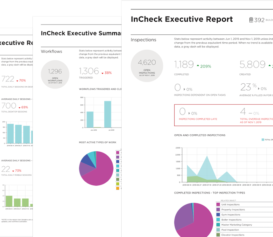Expanding is a challenge for any team, in any industry. But it’s especially challenging when you’re a small property operations team without unlimited resources.
We’re not even talking about the process of adding a building in itself – that is, opening a new construction property or onboarding an existing building to new management. Those transitions are complicated, with little room for error and no room for delays.
But after that extensive process, when your new property is finally a part of your roster, your work has literally just begun. Now you’ve got to plan everyday operations and maintenance for this new property alongside your existing ones.
Even though you might have well-oiled plans for your current portfolio, and your team is able to execute those plans well, expanding your buildings can render those plans obsolete. If you’re thinking about portfolio expansion, read on for tips on adjusting operations without lowering expectations.
“It’s like we’re still operating as if we have three buildings, but now we have ten.”
Operating needs can change more quickly than you think, especially if you’re rapidly expanding. The above quote is from a team we work with who wanted a new way of managing operations after rapid growth at their company.
They knew that expanding operational needs required them to take a new, fresh look at how their team was performing and responding, and how they were tracking it all.
Of course, the needs of each management team are wildly different based on staff size, property location, and more. Asking your team the right questions can help you determine whether or not you need a brand new operational plan (or just a modified one), and what that plan will look like. For example:
- Does this property have unique equipment or needs that require special regular maintenance?
- Will the additional tenants drive up response and repair times past our company’s promised SLAs?
- Are there currently available staff hours to meet the ongoing maintenance and resident needs of this new property?
- Does this new property significantly expand our current geographical area of service?
Answers to the above can help you determine if and how your staffing levels need to change, what new protocols need to be in place, and how you can execute it all seamlessly.
Staffing Adjustments
If you decide that you need new staff members, it’s important that you’re able to get them up-and-running ASAP. The sooner they can contribute to your team’s workload, the better.
Of course, you don’t want a rushed onboarding process to lead to mistakes or errors that impact your company’s bottom line. Creating a solid onboarding strategy is key here – more on that in a bit.
What if you’re not adding any staff at the moment? If your team is staying as-is, perfecting your operational policies and practices becomes even more critical. Your team’s day-to-day schedules will undoubtedly change, and they’ll need your guidance to know how to best handle new responsibilities alongside existing ones.
Training Best Practices
That’s where training comes in!
Training isn’t just for newbies to your team – ongoing training is critical for ongoing success at all levels of your organization. The best part? You can use the same strategies for onboarding new employees and updating current team members.
In order for new policies to be executed effectively and efficiently (and by anyone), here are some training must-haves:
- Training material must be accessible – If someone’s in the field performing an inspection, they might not have time or resources to refer to your 200-page operating manual. Make sure any processes they might have to perform onsite can be easily pulled up on their mobile device for quick reference (bonus points if things like video tutorials are included!)
- Training material must be digestible – What does this mean? It’s easier for someone to follow along (whether it’s the first or fortieth time performing a task) if details are laid out simply and specifically, step-by-step. Reading a lengthy article (heck, even this blog post) isn’t the best way to process instructions – especially if you’re onsite, and in a time crunch. Specific, clear directions (“Press the red button to get the correct boiler temp recording”) work best.
- Training material must be adjustable – One of the biggest problems with printed operating manuals? They’re super difficult to change once ink is on the paper. When you need a change you’re forced to redo everything (wasting time and money) or make sloppy manual additions and edits. Keeping your training materials in a digital format allows you to make quick and easy adjustments that take effect immediately. The next time your team performs a unit inspection, your changes are in place, ready to be executed to perfection.
Operations & Logistics
If you’re still using a spreadsheet to track every single building, now might be the best time to ditch it.
Adding another tab for your new property (or worse – multiple tabs for multiple new properties) won’t save you time when it comes to assigning and tracking work. Having a system that easily expands with your portfolio is key to saving administrative time, and applying your existing procedures to new properties.
Take a look at your current property operations stack (inspection tech, document management system, work assignment & tracking, etc.) and think about how it would look if you added one more building, three more staff members, and 10 new pieces of equipment. Do things still flow the way you want them to? Is it harder to find what you’re looking for?Would making a change to your operating tech simplify things?
It’s never too late to change the way your team works, but planning (and rethinking) your ops strategy in advance can be huge for reducing administrative overhead and minimizing logistical issues.




